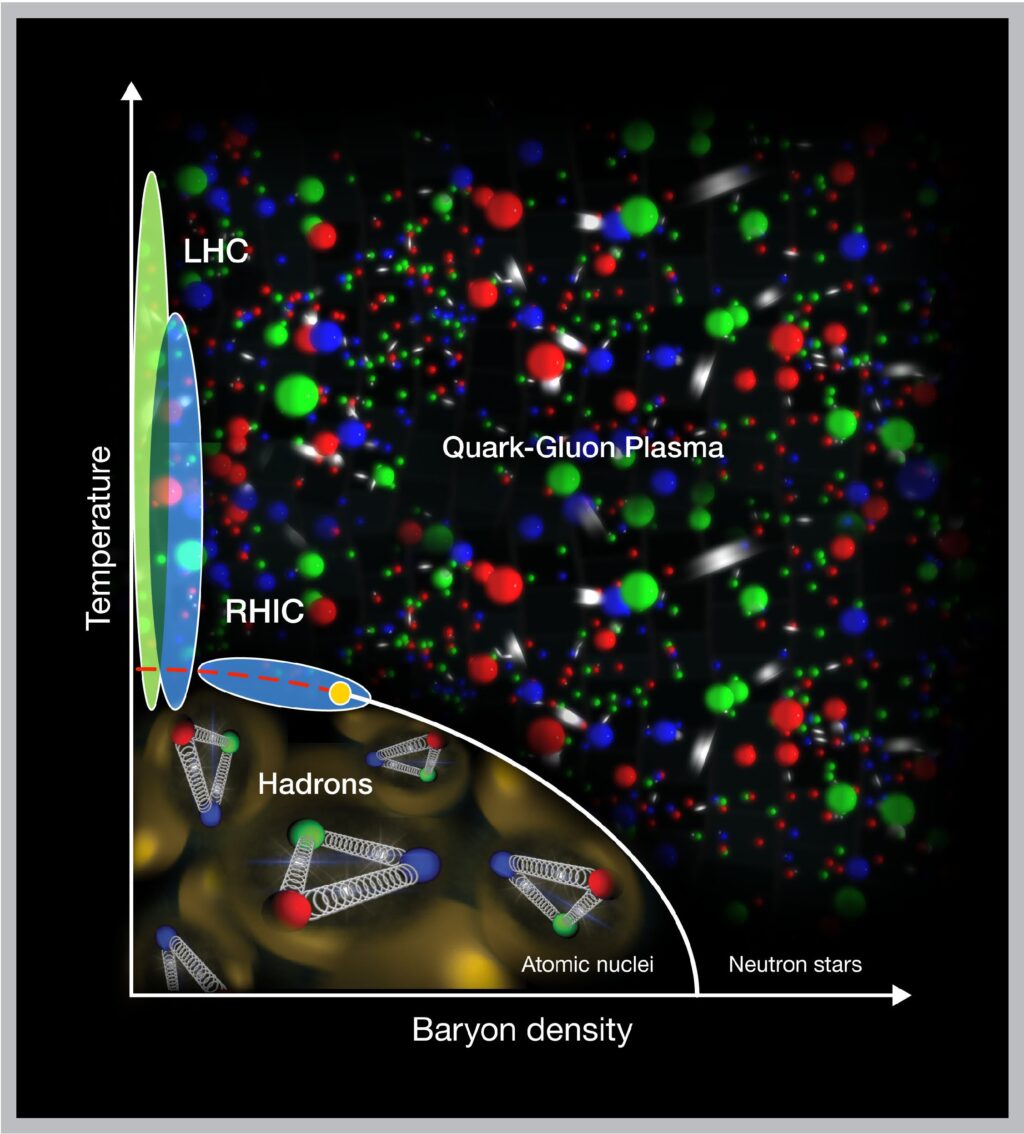
In a groundbreaking development, physicists from the STAR collaboration have published a high-precision analysis of data from the Relativistic Heavy Ion Collider (RHIC) at Brookhaven National Laboratory. The findings, recently released in Physical Review Letters, suggest the observation of a key signature of a “critical point” in nuclear matter—a unique marker indicating a phase change in the fundamental building blocks of protons and neutrons.
This discovery is a significant milestone in the ongoing quest to map the phases of nuclear matter, akin to the centuries-old efforts to understand the phases of water. The critical point is crucial for comprehending the quark-gluon plasma, a state of matter that existed shortly after the Big Bang and is recreated in RHIC’s high-energy collisions.
Unveiling the Critical Point
The STAR collaboration’s latest results reinforce previous hints of a critical point, a transition in how quarks and gluons, the constituents of protons and neutrons, change phases. However, researchers remain cautious, awaiting further confirmation from additional data analyses. “Since the last findings, STAR undertook a huge collection of datasets using many new and upgraded detector components,” said Ashish Pandav from Lawrence Berkeley National Laboratory. These enhancements have allowed scientists to track more particles with unprecedented precision.
Berkeley Lab has been instrumental in the STAR project, contributing to both experimental and theoretical advancements. The lab’s engineers were pivotal in designing the detector’s primary tracking system, and the Beam Energy Scan program, which explores gold-ion collisions at varying energies, was conceived at Berkeley Lab in 2004.
Theoretical Insights and Data Analysis
Volker Koch, a nuclear theorist at Berkeley Lab, emphasized the excitement within the theory community sparked by the new data. “Now it is up to theoreticians to put the ingredients together and understand how the data can tell us about the phase structure in strong interactions,” he remarked.
The search for the critical point involves analyzing fluctuations in proton production during collisions. These fluctuations, akin to turbulence experienced by an airplane, are subtle and require sophisticated statistical methods to detect. Mikhail Stephanov, a theorist from the University of Illinois Chicago, noted that the critical point would manifest as changes in higher-order statistical values, such as kurtosis, which describe the shape of data distributions.
Implications for Nuclear Physics
Finding the critical point would mark a fundamental milestone in understanding matter under extreme conditions, from the universe’s birth to neutron star cores. Xiaofeng Luo, a STAR collaborator from Central China Normal University, highlighted the significance of these findings in mapping the nuclear phase diagram.
The STAR team’s observations show a distinct minimum in kurtosis at a collision energy of around 20 billion electron volts (GeV), suggesting a potential signature of the critical point. However, further analysis is needed to confirm these results, particularly at lower energies where data gaps exist.
Future Directions and Global Collaboration
The STAR collaboration, supported by scientists worldwide, continues to refine its analyses and explore new data. “These results reflect more than 15 years of sustained global effort to precisely map the nuclear phase diagram,” said Bedangadas Mohanty from India’s National Institute of Science Education and Research.
As the quest for the critical point progresses, the collaboration looks forward to further theoretical refinements. “Eventually, we’d like to translate the signatures we see into properties of the nuclear phase diagram,” Stephanov stated, emphasizing the need for a deeper understanding of the critical point’s effects.
The study was supported by the DOE Office of Science, the U.S. National Science Foundation, and various international agencies. Data analysis utilized resources at Brookhaven Lab, Berkeley Lab, and the Open Science Grid consortium, underscoring the collaborative nature of this scientific endeavor.





